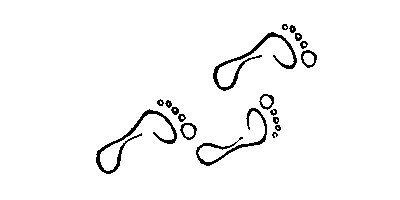When you hear about foam-rolling, it mostly considers rehabilitation, i.e. in quite an unpleasant circumstances. It has transformed lately from a mysterious technique used only by therapists to an everyday practice for us – regular people. It can protect us from a number of injuries and help during regular daily workouts, sometimes even exceeding the benefits coming from stretching before or after exercise.
FOAM-ROLLING
I myself encountered the idea of foam-rolling at the beginning of my running practice, as I was looking for some help in the internet for the nagging knee pain. It turned out that I had a popular ITBS, ie. the iliotibial band syndrome. It was then that for the first time I started self-massaging the band (using simply a bottle of water). At first it hurt terribly (both the injured and the healthy band in the other leg), but after a few days the muscles „adapted” and stopped hurting as much. As a result, pretty soon I got rid of the problem and since then a bottle of water was always at hand to be used as a homemade foam-roll.
I recently discovered that muscle rolling not only restores the correct functioning of the overloaded muscles, but is also very beneficial with daily routine.
According to a survey published in the Journal of Strength & Conditioning Research, muscle rolling increases their range of motion. More importantly, it does so without adversely affecting their strength, and such negative effect occurs with stretching. Stretching muscles causes the same effect as with stretching of a rubber band. As a result we get a longer but weaker structure. If we extend too far – the band breaks. The same happens with the muscles, which is why, apart from stretching, we must also do strengthening exercises.
With rolling of muscles there is no such effect, and the range of motion increases. Moreover, using a roller we obtain the effect of myofascial massage and relaxation of so called trigger points, responsible for muscle chain tension. Sucha deep massage allows for better relaxation and flexibility of muscles.
BEFORE OR AFTER TRAINING
Using the roller before training can be a very good warm-up. Rolling the muscles, as mentioned above, extends the range of motion (up to 20%), relaxes and warms the muscles intensively. This results in a better quality of training and improves resistance to possible injuries. After foam-rolling you can also perform a dynamic warm-up and you’re all ready to work.
Rolling after training massages and relaxes tired and tense muscles and trigger points. Even after a very long or intense workout when you are afraid to stretch the tired and tense muscles so as not to accidentally injure them, rolling is a safe option because it is more like a tissue massage.
WHICH MUSCLES TO ROLL
Depending on what kind of a roller we apply, we can massage virtually any muscle. Classic, harder roller will serve us to massage legs and arms. With a soft roller we’ll massage our back well and the ball will be used to massage buttock or iliolumbar muscles.
It should be noted that people only beginning the adventure with rollers should start with the softer version, as muscles need to get used to this new stimulus. With time, you can start to use comfortably harder rollers – even wooden rolling pin or glass bottles (for lack of better alternatives).
HOW TO USE A FOAM-ROLLER
It’s very simple. It’s important to place full weight on the roller. We put the it on the floor and set up so as to minimize the number of support points of the body, and place the proper muscle directly on the roller – and begin to roll.
How long to roll – there are many theories. Various sources provide very different times for one exercise. Some say max. 30 seconds for a muscle, others say that one exercise should take up to 3 minutes. In my opinion, as usual, the answer is moderation. We should feel ourselves when the muscle relaxes. Surely you can’t cross the line with a length of „abuse” of muscles, same as the masseur will not torture a calf for half an hour.
If you find this article interesting, share it with others, using the social media buttons below the text. If you don’t want to share, maybe a least like it? :-)



